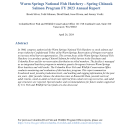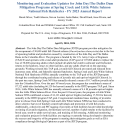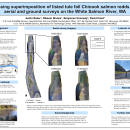
1211 SE Cardinal Court
Suite 100
Vancouver, WA 98683
United States
About David Hand
David supervises the Hatchery Assessment program, which provides technical support to the Gorge Complex National Fish Hatcheries through monitoring of program performance in terms of goals and objectives, conducting studies to evaluate potential management changes, and evaluating impacts of hatchery programs on natural populations. He develops pre-season run forecasts for hatchery stocks and monitors juvenile outmigration survival of hatchery releases. David is also part of the the Department of Interior's Decision Analysis community of practice, providing decision analysis support to the Columbia River FWCO, Region 1 FAC, and other USFWS programs. He has also participated in several DOI International Technical Assistance Program projects in S.E. Asia.
Program: Hatchery Assessment
Current Projects:
1. Supervising the CRFWCO Hatchery Assessment Program
2. Developing pre-season run forecasts for hatchery stocks
3. Monitoring survival of out-migrating juvenile stocks released from hatcheries
4. Coordinating E.S.A. coverage for Columbia River Gorge Complex NFHs
5. Providing decision analysis support to the CRFWCO, regional FAC and other USFWS programs as a certified decision analyst
Past Projects:
1. Collaborated with fisheries agencies in Laos, Thailand and Vietnam to assess fish migration and develop fish passage fish passage
Fish passage is the ability of fish or other aquatic species to move freely throughout their life to find food, reproduce, and complete their natural migration cycles. Millions of barriers to fish passage across the country are fragmenting habitat and leading to species declines. The U.S. Fish and Wildlife Service's National Fish Passage Program is working to reconnect watersheds to benefit both wildlife and people.
Learn more about fish passage plans for large- and small-scales dams in the Mekong River Basin, as part of the DOI International Technical Assistance Program
2. Evaluated volitional release strategies at Warm Springs National Fish Hatchery
3. Assessed run-forecast models for Spring Chinook Salmon
Background: David has previously worked for Oregon Department of Fish and Wildlife and the Bureau of Land Management
At CRFWCO since: 2001




